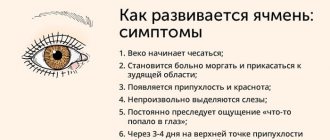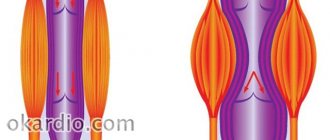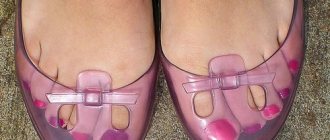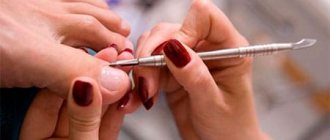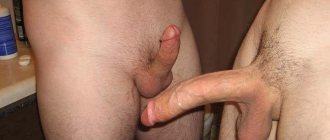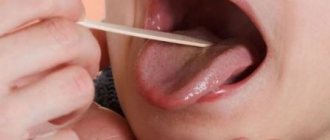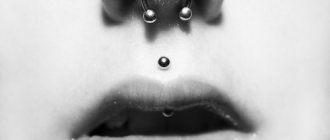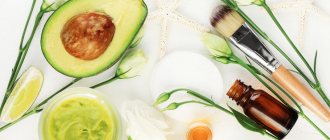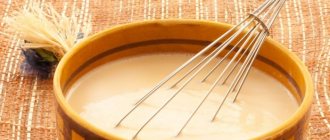This type of piercing is used to puncture the cartilaginous part of the auricle. Cartilage piercing and its consequences are different from a regular earlobe piercing with a needle or gun.
Tools for piercing the ear cartilage : catheter needle (the number depends on the diameter of the jewelry), a window clamp, a clamp and a ring spreader.
Earrings for cartilage piercing : ring, barbell, circular.
Treatment before the procedure: before marking, the ear is wiped with 95% alcohol. The decoration is immersed in an antiseptic solution for 15-20 minutes (95% alcohol, disinfectant solutions).
Place of puncture: the point is placed with an aseptic marker.
Ear cartilage piercing process
Secure the ear with a window clip. Use a sterile catheter needle to pierce the ear through. Remove the needle, leaving the catheter tube in the ear cartilage. Insert the stem of the jewelry into the catheter and, as it were, push the catheter out of the canal with the stem of the jewelry. When the threaded part of the jewelry appears from the opposite hole, you need to remove the catheter from the stem and screw on the ball (or clamp the ring).
Care after ear cartilage piercing
The healing of the puncture and the formation of a channel when the cartilaginous part of the auricle is pierced takes 4 weeks, after which the jewelry can be changed. We recommend applying chlorhexidine bigluconate to the puncture area and decoration 2-3 times a day for 2-4 weeks. The earring should be moved and rotated so that the solution gets onto the earring shaft and into the canal.
Types of piercings
The most common types of ear piercings are:
- lobe piercing. The soft part of the ear is pierced, healing occurs quickly;
- helix. The puncture is made in the upper part of the curl. There are no nerve endings in the cartilage, so the patient does not experience any pain;
- anti-helix. A puncture is performed in two places in the upper cavity of the ear;
- upper helix. A puncture is made in the upper part of the curl closer to the head. The procedure is quite complex, so it is rarely performed. Carnations are commonly used as decorations;
- Daith. The technique is associated with Indian views regarding acupuncture. The middle ear cartilage is pierced and for this you should take a curved needle;
- Industrial. Two punctures are made, which are connected using a barbell-shaped earring. Usually the holes are made parallel to each other.
Products mentioned in the article
Studex ear piercing gun
Amidine aqua, spray for disinfection of mesoscooters, 90 ml
STUDEX ear needle earrings, 1 pair
Care instructions after piercing the ear with a catheter needle (cartilage piercing)
- Do not remove the earrings for 4 weeks.
- In the first 3 days after cartilage puncture, refrain from visiting the pool, bathhouse, or swimming in reservoirs.
- Every day, morning and evening, for 4 weeks, treat the puncture site with a special antiseptic or chlorhexidine digluconate. The product must be applied so that it reaches the needle entry and exit points, as well as into the canal. During processing, it is necessary to scroll the earring and move it in the channel.
- You cannot treat the puncture site with alcohol - tissue burns may occur.
- After a shower, sports activities, baths and swimming, treat the puncture site additionally.
- After 4 weeks, you can remove the needle earrings and exchange them for other piercing jewelry.
- If redness, swelling around the earring, pain or discharge occurs, you should immediately remove the jewelry and contact the specialist who performed the piercing.
What happens to ear holes over time?
The problem with tunnels is that they only look attractive when they are fitted with special rims. If you take them off, the lobes droop unsightly. Therefore, having such decoration, it is very difficult to change the image from informal to business. That is why some of the people who once made tunnels decide to get rid of them. And they begin to think about how to quickly heal holes in their ears.
But one should not assume that only owners of huge tunnels need to solve this problem. In fact, many are interested in how to heal holes in the ears, and among them:
- Those who like to wear large, massive jewelry, which causes the holes to take on an unattractive, elongated shape.
- People who, for physiological reasons, have developed scar tissue in the form of protruding balls at the puncture site.
- Those who are unlucky with the salon, due to which the holes in the ears are not at the same level or at an angle, which is noticeable when you wear jewelry.
- Elderly people whose ear hole is deformed.
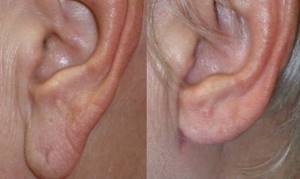
Care for fast healing
The duration of the rehabilitation period depends on the thoroughness of care. Recommendations after cartilage piercing are aimed at minimizing complications and accelerating tissue healing time.
- Treatment with an antiseptic should be carried out at least 3 times a day until the swelling and redness disappear completely. In addition, you need to wipe the puncture site with medical alcohol, Miramistin or Chlorhexidine after playing sports or if dirt gets on your skin. It is recommended to always have alcohol wipes on hand.
- To prevent the earring from growing into the skin, you need to move it carefully. On the first day after the procedure, manipulations with the puncture will be accompanied by discomfort. It is strictly forbidden to make sudden movements so as not to damage the wound: for the same reason, you need to carefully remove clothes that may get caught on the earring.
- Do not wet your piercing with water for the first few days after visiting the salon.
- The earring cannot be removed until the tissue has completely healed. The exception is the development of complications.
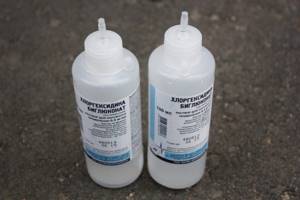
It is more convenient to care for piercings in cartilage tissue during the demi-season period: in the summer a person sweats more, which forces him to constantly treat the puncture with antiseptic solutions. In winter, there is a risk of the wound getting cold or damaging it by catching the earring with a scarf or collar.
Plastic surgery
How to heal holes in ears? According to reviews, plastic surgery is the best way to deal with this problem. Contacting the clinic is recommended in all particularly difficult cases, for example, when large holes remain after the tunnels, when the lobes are severely deformed, when no other remedy has worked.
How do plastic surgeons fill holes in the ears? They suture them or remove the defect with a laser. The procedure is most often performed under local anesthesia, and only in particularly severe cases will you have to go to the clinic. After the hole is sutured and a normal ear is formed, the patient is sent home with a patch on the seam. The ear usually becomes swollen, swollen and painful after the procedure, so patients are prescribed painkillers. The stitches are removed after 7-10 days, and the entire recovery period will take 3 months. You will not be able to pierce your ear for a year after surgery.
As a result of the operation, a person is left with a small, barely noticeable scar. It can be sanded down over time to make it even less noticeable.

Possible complications
Let us highlight a number of consequences that may occur after the cartilage piercing procedure. The risks of their occurrence increase if it is not carried out by a qualified specialist, and also if you do not comply with the above-mentioned rules regarding care.
Effect on reflexogenic zones
Biological points that are located on the ears are considered the place of projection of the internal organs of a person. That is why some experts believe that when a certain point is pierced, a negative effect occurs on a particular organ. For example, earlobe piercings can affect visual function. Yet traditional medicine does not confirm this fact, which is why the decision remains up to everyone.
Development of inflammatory processes
If non-sterile instruments were used during the procedure, antiseptic treatment was not carried out properly, or care techniques were violated, infection with pathogenic microorganisms can easily occur.
As a result, the following unpleasant clinical symptoms appear:
- throbbing pain;
- redness and swelling;
- purulent discharge;
- local temperature increase.
Treatment of inflammatory complications is carried out by a specialist either using conservative techniques or through surgery
Bleeding
The puncture procedure is accompanied by minor blood loss; if the coagulation system is disrupted, the bleeding can become profuse, which will require the application of a sterile bandage.
Keloid scar formation
This is a rare complication, which is based on the proliferation of connective tissue that extends beyond the site of injury. Sometimes the scar grows for several months and reaches enormous sizes. The following patients are at risk:
- dark skin;
- close relatives had a similar pathology;
- over eleven years of age.
Sometimes an allergic reaction can occur to a piercing.
Allergic reaction
Itching can occur in a normal state, but if it is accompanied by swelling, hyperemia, and blisters that disappear after removing the jewelry, then most likely there is an increased reaction to the material of the earring.
In this case, you will need to change the decoration. In some cases, the use of antihistamines may be necessary to relieve clinical symptoms.
Facial nerve paralysis
Paralysis occurs as a result of the spread of an infectious process. The complication is accompanied by the appearance of the following symptoms:
- facial asymmetry;
- numbness of the face;
- feeling of heaviness;
- pain behind the ear;
- impaired lacrimation and salivation.
Neoplasm
If the piercing channel was not formed correctly or an infection occurred, a benign tumor may develop. If the tumor is large, it can lead to hearing impairment. The problem is resolved promptly.
Deformation of the auricle
The auricle droops or subluxation may occur. Sometimes cartilage tissue is destroyed. This usually occurs with repeated procedures or a large area of intervention. The deformity can be eliminated using plastic surgery.
Hearing loss may sometimes occur
How long will it take for a hole in the ear to heal?
How to heal holes in ears? The first thing to do is take off your earrings. Over time, the ears will begin to grow over. How long this will take depends on the physiological characteristics of the person. For some, the holes become covered with a film within a day or two, while others can walk for years without their ears healing. Another important factor is how long ago the punctures were made. The timings are as follows:
- If you immediately insert the jewelry after punching and then take it out, then after 5-10 minutes it will be difficult to insert the earring into the same hole. This is due to tissue swelling and narrowing of the canal.
- A fresh puncture heals from 2 weeks to 1.5 months.
- If you wear jewelry for a couple of months after the piercing, the channel will be completely formed. But it can still heal - in 1.5-2 months.
- If you wear the jewelry in your ear for 1 to 3 years, the hole will shrink with a film within 3-6 months. However, the earring can still be inserted into such a hole without re-punching, but it will be a little painful.
- Wearing earrings for more than 5 years makes it impossible for the holes to heal spontaneously. At most, only a thin film may appear.
Also, many are interested in whether it is possible to fill the ears without sewing up the holes after the tunnels. The same rules apply to them in many respects - if the holes are fresh, then they can heal on their own. True, most often such an ear has an ugly, unnatural shape. The size of the tunnels is also of great importance - the more the hole is stretched, the less likely it is that it will heal on its own, without the help of cosmetic surgery.
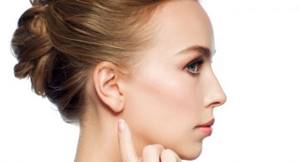
Technique
In salons, piercing is performed using special needles, catheters or a gun. Let's consider the sequence of actions when piercing with a pistol:
- the puncture site is treated with a special solution that contains alcohol;
- a needle and earring are inserted into the sterile container of the gun;
- the needle pierces the skin, then the jewelry is advanced into the hole;
- the pistol is unfastened and removed from the ear;
- the earring is secured with clips.
Cartilage puncture can be done at home; for this you will need to purchase a gun
If you decide to get a piercing at home, follow these steps:
- mark the puncture site on the ear, you can use a felt-tip pen;
- Be sure to disinfect your ear and hands. For this, either Chlorhexidine or ethyl alcohol is used;
- before making a hole, pull out the auricle;
- The puncture is made from the outside of the cartilage. The appearance of blood should not scare you, this is normal;
- It is best to use a clove, and it is better to apply an ointment with regenerating properties to its tip.
The times when piercing the earlobe in a piercing salon was the only service provided by a master have long since sunk into oblivion. Modern fashionistas want to constantly surprise others, so they are in an eternal search for the most unpredictable places for piercing.
Let's say, ear cartilage piercing, which these days has become as common and familiar a manipulation as a traditional earlobe piercing. The only thing is that there are several subtleties and secrets that everyone should familiarize themselves with before adding a new hole to their body.
Finding out whether it hurts to pierce the cartilage in the ear, and which tool is better to pierce - a gun or a needle, is not enough! Let's find out!
Contraindications for cartilage piercing in the ear
Like any violation of the integrity of the body, cartilage piercing has its contraindications, if ignored, a regular puncture can become a real health problem. So, the following conditions make it impossible to place an earring:
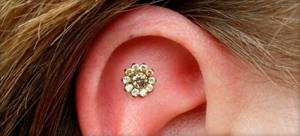
- skin diseases localized in the area of the auricle, acute or chronic;
- inflammatory ear diseases;
- allergic reaction in the active phase;
- mental disorders of various kinds;
- state of fever, increased body temperature;
- the presence of unhealed traumatic brain injuries.
If a woman carrying a child decides to undergo the procedure, she must first consult with a doctor. For a child, piercing is done only with a pistol; at an older age, it is permissible to use a medical needle for this purpose.
